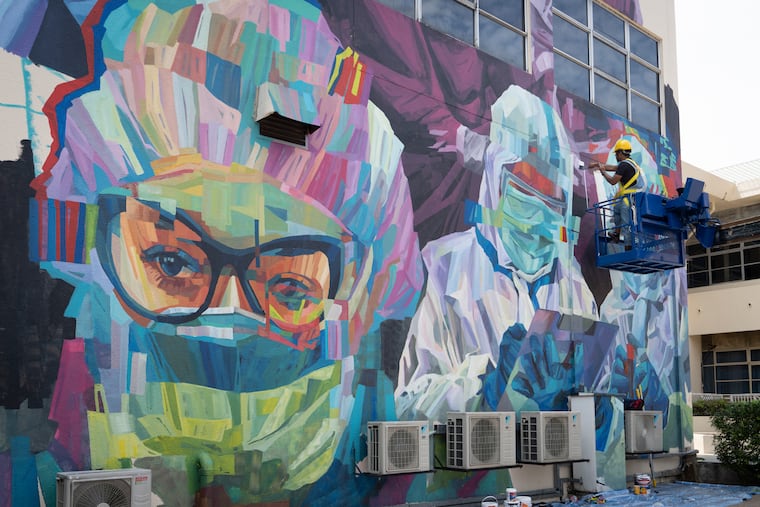The pandemic is a tale of smart monetary moves, crucial government spending, official bungling and human resiliency
A year into the pandemic, the response of government has been a mixture of bungling and sound policies.

It has been about a year since the COVID-19 pandemic appeared on the world’s radar as China struggled with widespread infections, overwhelmed hospitals, and a rising death toll. The Chinese economy — a juggernaut for the past quarter-century — took a big hit.
The entire globe has suffered a similar fate since. Fatalities and the economic cost continue to mount almost everywhere and will keep growing until much of the world’s population is vaccinated and herd immunity is achieved, a goal still months away, at best.
Much of the last year has played out as anticipated. The 1918 Spanish flu pandemic went through several waves over about two years and has been a reasonably good guide so far. To be sure, today’s medical science means the COVID-19 pandemic probably won’t last as long, be as deadly, or do as much economic damage, but much of what we are going through now and how we have responded is not so different from a century ago.
However, there have been surprises. Chief among them is the response of governments to the pandemic, both how badly botched their efforts to contain the virus have generally been and how aggressive their policy response has been to cushion the economic blow.
Some countries, mostly in the Asia-Pacific, such as Australia, China, New Zealand, South Korea and Taiwan, admirably contained the virus with aggressive early lockdowns and subsequent large-scale testing, tracing, and mask wearing. Their economies have bounced back strongly. Most others, including the United States, badly bungled things by never fully locking down, doing only cursory testing and tracing, and politicizing teh wearing of masks. The pandemic is now raging, and the economy is struggling.
The new Biden administration is working to right the wrongs of the Trump administration in containing the virus, but at this point, given the community spread and the mutating virus, the only way to bring an end to the pandemic is through widespread vaccination.
The global fiscal policy response to the pandemic has been massive. Nearly every country on the planet has used much bigger deficits to finance government spending and tax cuts to shore up pandemic-stricken households and businesses. If President Joe Biden gets just half of the $1.9 trillion in additional support he is asking from Congress, the total amount of anti-virus aid will come close to one-fifth of the nation’s GDP. This is far and away the most in the world, and double that provided during the financial crisis nearly 15 years ago.
The global monetary policy response to the pandemic, led by the Federal Reserve, has been just as massive. Within weeks of the pandemic striking the U.S., the Fed had dropped short-term interest rates to zero, began easing down long-term rates, and quickly backstopped much of the financial system. It worked. Businesses, households and municipalities have been able to get credit at interest rates that were even lower than prior to the pandemic.
Record low interest rates explain another big surprise: surging asset prices. Stock prices are up by double digits. House prices aren’t too far behind. Crypto currencies such as bitcoin and ethereum have taken off again, and prices for commodities from oil to agricultural products have also vaulted back. Low interest rates are supercharging asset prices at a time when investors who park their ballooning savings in checking and other cash-like saving vehicles are receiving close to nothing in interest. Any asset that provides even a modest return looks enticing.
Other factors are fueling the rise in asset prices, arguably even speculation. Witness the crazy trading in GameStop stock.
This kind of speculation highlights what is invariably a surprise when the economy suffers a shock of this magnitude: human behavior. Who would have imagined that wearing masks would emerge as a political issue, with politically vilification partially neutering them as a way address the pandemic? Who would have foreseen that Donald Trump would view testing as a PR problem instead a way to keep the sick from infecting others?
Still, human behavior, though difficult to gauge, has also contributed to the surprising ability of the economy to adjust to the pandemic shock. Work-from-anywhere is a good example. Less than a tenth of the workforce worked from home before the pandemic. During the height of the lockdowns last year, more than one-third of workers did. Today, it is closer to a fourth of the workforce and likely to settle there until businesses figure out some of the thorny issues around pay and productivity, which they will.
There are sure to be other surprises as the pandemic continues to unfold. Here’s hoping they are all positive ones. We are certainly due.